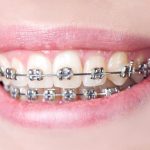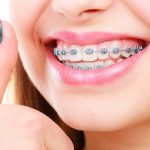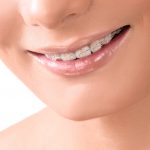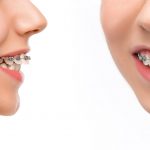Dental Braces: How Does Treatment Work and What Does it Cost?
Medically Reviewed by: Gary Hirsh, DDS, MS
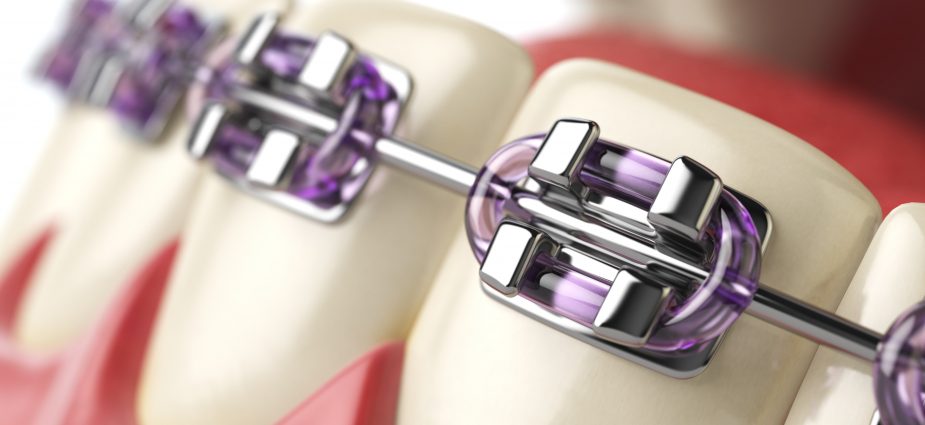
On this page:
- When are braces necessary?
- What’s the right age for braces?
- Adult braces
- Types of materials used
- How much do they cost?
Dental braces are a type of orthodontic treatment used to correct teeth that are crowded, crooked, protruding, out of alignment or have irregular spacing. By moving the teeth into the ideal position, braces help create a more attractive and healthier smile for both children and adults.
Before you can determine whether bite correction is right for you, it is important that you understand what is involved with treatment and what it costs. So, let’s break it all down
When are Braces Necessary?
When teeth are crooked and crowded, keeping them clean becomes very difficult. If brushing and flossing cannot be completed properly, tooth decay, gum disease and possible tooth loss can occur.
An improper bite can interfere with your ability to chew and speak properly, as well as cause abnormal wear to the enamel of your teeth. If your teeth are protruding and/or your upper and lower teeth don’t come together comfortably (called malocclusion, or a bad bite), jaw problems also may arise.
Therefore, by keeping your teeth in the proper alignment and allowing better oral hygiene, braces do more than keep your smile looking good. They also help you keep your teeth, gums and oral cavity healthy. There is now evidence to prove that periodontal infections resulting from poor oral hygiene can enter the blood stream and cause cardiac conditions.
What’s Behind a Bite?
The most common oral health issue prompting orthodontic treatment is a bad bite (malocclusion). Malocclusion may be caused by one or more factors:
- Small Mouth: A small mouth can result in a limited amount of space for the teeth to grow. This can foster crowding once the permanent teeth erupt.
- Tongue Thrusting: Some children thrust their tongue forward, pressing it against the lips with a force that can result in the protrusion of teeth, or “open bite,” among other problems.
- Extra Teeth or Not Enough: Sometimes, a person can have extra teeth develop and/or protrude, or certain teeth that do not develop or protrude at all. If you have too many teeth or not enough, your bite can be affected. In addition, the untimely loss of baby teeth or traumatic injury to the face, mouth or jaw can also affect the bite.
- Misaligned Jaw and Bone Structure: A misaligned jaw or supporting bone structure can affect the bite and create malocclusion. Malocclusion may result in difficulty chewing and speaking, or otherwise impact the functionality of the teeth. Furthermore, malocclusion may contribute to other oral health conditions such as TMJ (TMD) and teeth grinding (bruxing).
- Poor Muscular Functional Habits: Malocclusion may be caused by poor muscular functional habits such as thumb sucking during and beyond infancy. Some adults still suck their fingers or thumbs, resulting in tongue thrust habits that can be a detriment to dental and facial development.
The Right Age for Braces
A person typically inherits tooth spacing, malocclusion, crowding, misalignment or similar problems from their parents. However, these conditions also may be caused by habits such as thumb-sucking, tongue thrusting, lip wedging, mouth breathing due to allergies or large tonsils and adenoids, premature loss of teeth or trauma, and generally begin to appear between the ages of six and 12 years old — the time when the permanent teeth start to erupt.
Therefore, orthodontic treatment with dental braces should begin between the ages of eight and 14 in order to achieve optimal results. It is generally considered ideal to have an orthodontic evaluation no later than the age of seven, since this is when there is a good mix of primary (baby) and adult teeth in the mouth.
Also, dentists are better able to spot developing teeth and jaw growth at this time in a child’s life. This enables them to anticipate problems that may arise and plan braces treatment accordingly.
Adult Braces
Children are not the only ones who may benefit from dental braces. Adults also can undergo orthodontic treatment to correct alignment, spacing, crowding and malocclusion problems. The process for moving teeth is basically the same at any age, but the treatment may take longer for adults. This is due to the fact that adult facial bones are no longer growing, and certain corrections may not be possible utilizing braces alone. Depending on the specific type and severity of your alignment or malocclusion problem, tooth extraction or maxillofacial surgery may be required.
The Materials
Braces typically consist of brackets and arch wires, as well as elastic ties that hold the arch wires in place.
Brackets: Brackets may be composed of metal, ceramic, composite or a combination of these materials. Today’s brackets have come a long way from those of the past.
- Patients now can choose different bracket shapes and different color elastics.
- Gold-plated brackets are even available, as well.
- Today’s brackets are much smaller than their predecessors and sometimes may be attached to the back of the teeth to make them less noticeable. Some do not require the old fashioned wire or elastic ties to hold the wires in place.
Arch Wires: Wires are attached to the brackets and apply constant pressure to the teeth to move them into the necessary positions. These wires retain their original shape yet are extremely flexible. Like brackets, dental arch wires also are now made of newer materials that can reposition the teeth and underlying roots more readily and with less discomfort than in the past.
How Much Do They Cost?
The cost of dental braces is approximately $4,800 to $7,200. Your specific cost profile will be determined by a variety of factors, including the type of treatment, the duration of treatment, the orthodontist, location, your dental insurance and any other restorative work that may need to be completed prior to or throughout treatment.
Products such as Invisalign or ClearCorrect (marketed as clear orthodontic aligners) may cost more than traditional braces, but they typically range from $3,500 to $7,000; the latter tending to be the national average cost. Costs vary due to the severity of the orthodontic problem, as well as the regional differences in fees.
Many orthodontists do provide flexible payments and plans to ensure that patients who need braces have the opportunity and ability to afford them. If you don’t have insurance and your orthodontist does not offer financing, you may be able to enlist the services of a third-party financing company like CareCredit or Capital One.
About the Reviewer
Gary Hirsh, DDS, MS, of San Diego, Calif., is a board-certified orthodontist focusing on the latest procedures in orthodontics. He is a member of the American Association of Orthodontists, the California Dental Society and the Pacific Coast Society of Orthodontists. He is a past president of the Paul Revere Dental Club, The Neil Brahe Study Club and the San Diego Orthodontics Study Club.



